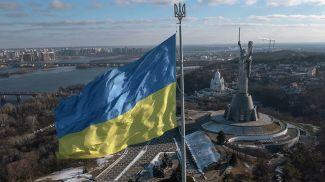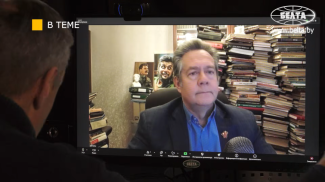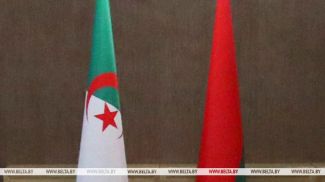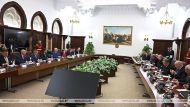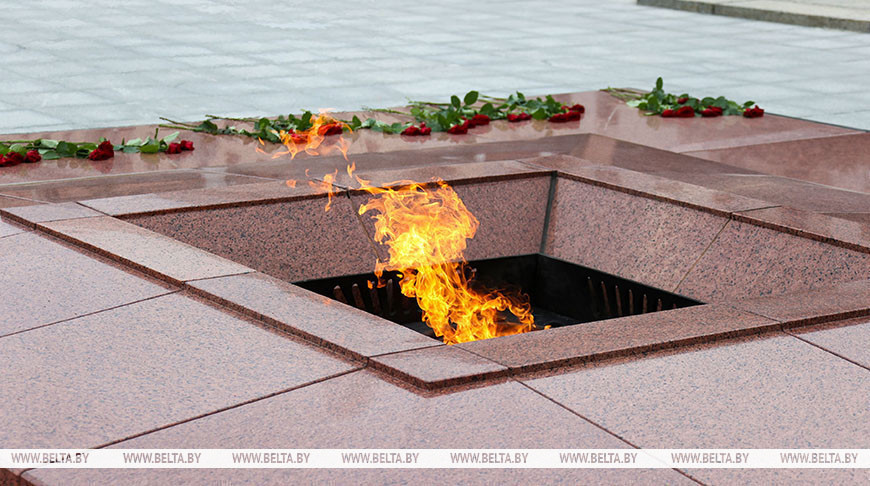
News of the story
"Victory Parade: Stories and Faces"
MINSK, 20 August (BelTA) - Stepan Pashkevich went to war on the very first day - 22 June 1941. He fought in nearly every major battle of the Great Patriotic War: he participated in defensive operations in Moldova and southern Ukraine, in the Donbass and the Don River region, the Battles of Stalingrad and Kursk, the Battle of the Dnieper. He alsohelped liberate Ukraine, Moldova, Romania, Hungary, Czechoslovakia, Yugoslavia, and Austria.
One of his first awards, the Combat Merit Medal, was bestowed upon the Red Army soldier on 29 September 1942. That day, a ferry loaded with a heavy gun, a tractor, and a truck was trying to reach a new crossing point over the Seversky Donets River under enemy mortar and machine-gun fire. Stepan Pashkevich was assigned to assist the motorists on the ferry. Suddenly, enemy aircraft began attacking the crossing, ‘diving’ straight for the ferry! Only by a miracle did they manage to reach shallow water and they immediately rushed to help their comrades. Risking his life, Stepan Pashkevich carried the severely wounded to safety under enemy aircraft fire.

One of his first awards, the Combat Merit Medal, was bestowed upon the Red Army soldier on 29 September 1942. That day, a ferry loaded with a heavy gun, a tractor, and a truck was trying to reach a new crossing point over the Seversky Donets River under enemy mortar and machine-gun fire. Stepan Pashkevich was assigned to assist the motorists on the ferry. Suddenly, enemy aircraft began attacking the crossing, ‘diving’ straight for the ferry! Only by a miracle did they manage to reach shallow water and they immediately rushed to help their comrades. Risking his life, Stepan Pashkevich carried the severely wounded to safety under enemy aircraft fire.

Junior Sergeant Pashkevich was awarded the Order of the Patriotic War 2nd Class for his assistance to Soviet troops at the Bahlui River on 21 August 1944. The enemy had established strong defenses on the heights there, protecting the city of Iași from the flank. With nightfall, it became necessary to get tanks across a swampy bog to support the infantry. To make this happen, Stepan Pashkevich and his squad built a bridge working under machine gun fire. As a result, at dawn, 242 tanks broke through, ultimately deciding the outcome of the battle for Iași.
The crossing of the Danube River proved to be one of the most terrible ordeals our hero had to endure. The infantry had not even reached the enemy shore yet, but he and his squad had already begun assembling a ferry. As soon as it was ready, Stepan Pashkevich and fellow soldiers began transporting troops. They dodged enemy fire as best they could. But the enemy still managed to breach the right pontoon. And then, without hesitation, the sergeant began patching the hole.
Stepan Pashkevich made seven trips! According to command documents, he went without sleep or rest for two nights and two days, continuing to ferry reinforcements even when dozens of enemy aircraft attacked. For the heroism displayed during the Danube crossing, Sergeant Pashkevich was awarded the highest distinction - the title of Hero of the Soviet Union.
Stepan Pashkevich was in Czechoslovakia when the war ended. It was from there that he was sent to participate in the Victory Parade in Moscow. The journey took about three days, first in freight cars, then in sanitary wagons. Preparations and rehearsals lasted almost a month. The Victory Parade was impossible to forget, the war veteran admitted, calling it a historic event. Standing in formation on Red Square opposite the government tribune, he even saw Stalin.
Stepan Pashkevich was in Czechoslovakia when the war ended. It was from there that he was sent to participate in the Victory Parade in Moscow. The journey took about three days, first in freight cars, then in sanitary wagons. Preparations and rehearsals lasted almost a month. The Victory Parade was impossible to forget, the war veteran admitted, calling it a historic event. Standing in formation on Red Square opposite the government tribune, he even saw Stalin.
The project “Victory Parade: Stories and Faces” is published in the 7 Days newspaper and on the website of the Belarusian news agency BelTA twice a month. During the year we will be narrating the stories of the Belarusians who took part in the legendary Victory Parade. These men fought at Rzhev and Odessa, won the battles of Stalingrad and Kursk, liberated Belarus, and took Berlin. On 24 June 1945 they marched triumphantly through Red Square in Moscow. They are the faces of our great Victory!





